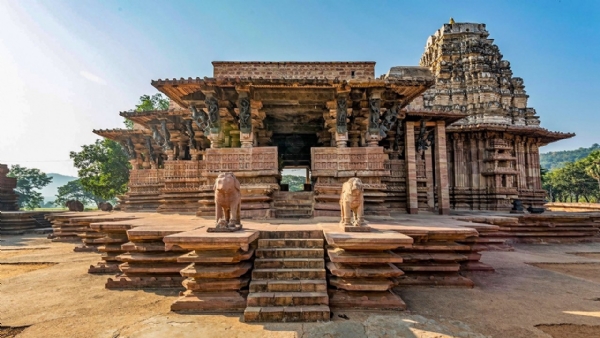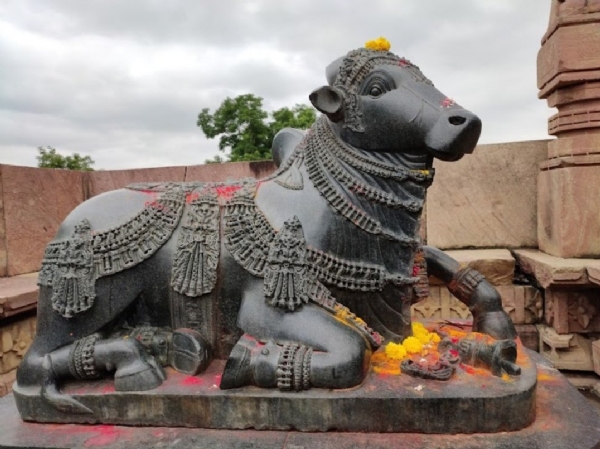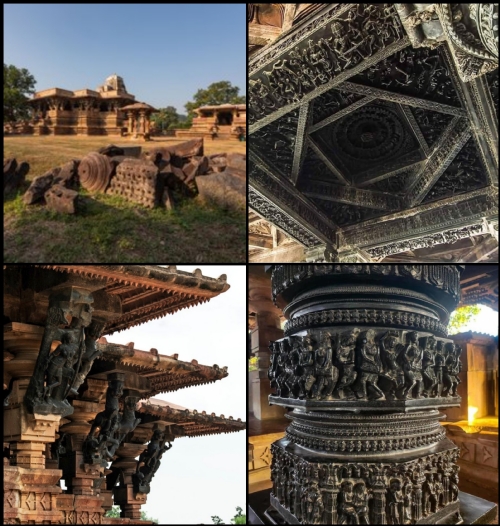Ramappa Temple, the Kakatiya legacy in Warangal
05 Apr 2022 16:37:45
Today, let us explore one of the most historically and architecturally prominent temples in South India, which has some of the most unique features that you probably won't come by so easily. Located in the sleepy town of Palampet, in Mulug taluk, Telangana, the Ramappa Temple is around 67 km away from Warangal. The temple is an important part of any Warangal tour, as it is an architectural wonder of one of South India’s most powerful dynasties – the Kakatiya’s. It is known for its historical richness and architectural excellence. The temple is the main attraction of Palampet.

History | According to some inscriptions, the Ramappa temple was built around 1213 AD. This temple was constructed during the rule of Kakatiya King Ganapati Deva. It was built under the supervision of Chief Commander Recherla Rudra. However, the temple came to be known by the name of its sculptor who was called Ramappa.
The walls here have intricate carvings. Even pillars and ceilings here have been intricately engraved. The sanctum, surrounded by pradakshina path is dotted with a shikhara. As you enter the temple, you will see a Nandi mandapam with Nandi, facing the Lord Shiva shrine. Although the mandapa isn't in good condition, the majestic statue of Nandi, divine vehicle of Lord Shiva, is undamaged and presents an impressive sight.
 Kameswara and Koteswara shrines are two shrines built here; but Kameswara temple is now in ruins. Ramappa temple presents a classical style of structures as per which the main building of the temple is built on a raised platform so as to differentiate it. It is symbolic of the connection of Heaven and earth in the middle of both.
Kameswara and Koteswara shrines are two shrines built here; but Kameswara temple is now in ruins. Ramappa temple presents a classical style of structures as per which the main building of the temple is built on a raised platform so as to differentiate it. It is symbolic of the connection of Heaven and earth in the middle of both.

Also, each pillar of the temple depicts sculptures and stories from mythology. It is also said that if you hit a pillar or a stone of this temple, you will hear musical sounds. Moreover, unlike most of the other Lord Shiva temple in India, here Nandi is seen in an attentive posture, ready to take the command of his Lord and make it happen.

Ramalingeswara temple which is also known as Ramappa Temple dates back to 1213 AD. It was built during the reign of Kakatiya kingdom. Dedicated to Lord Ramalingeswara, it is the said to be the only temple in India, which is known by the name of its sculptor – who was called Ramappa.
Now under The Archaeological Survey of India (ASI) administration, this temple presents a peep into the glorious past of the region and the Kakatiya kingdom.
History | According to some inscriptions, the Ramappa temple was built around 1213 AD. This temple was constructed during the rule of Kakatiya King Ganapati Deva. It was built under the supervision of Chief Commander Recherla Rudra. However, the temple came to be known by the name of its sculptor who was called Ramappa.
This temple is considered to be one of best of the medieval temples of South India. In spite of it being 800-years-old, and witnessing various invasions & wars over the course of time, Ramappa Temple still stands proud, that too in pretty good shape, considering all the invasions.
Also Read | Gandikota fort, the Grand Canyon of India
Architecture | This temple although constructed with bricks that can float in water, is still standing strong. It is built on a 6 feet high platform. It is consisted of a garbhagriha, an antarala, and maha mandapam. The main entrance gate, built on the outer wall of the temple, is now in ruins. The main temple is surrounded by walls.
The walls here have intricate carvings. Even pillars and ceilings here have been intricately engraved. The sanctum, surrounded by pradakshina path is dotted with a shikhara. As you enter the temple, you will see a Nandi mandapam with Nandi, facing the Lord Shiva shrine. Although the mandapa isn't in good condition, the majestic statue of Nandi, divine vehicle of Lord Shiva, is undamaged and presents an impressive sight.

Inside the temple, Shivalingam has been placed at a height of 9 feet in garbhagriha. At the entrance of Garbhagriha, you will see carvings on the walls, showcasing various dance forms as well as different musical instruments. Its ceiling has carvings depicting scenes from Hindu epics Ramayana & Shiva Purana.

Did you know | The bricks used in building the Ramappa Temple are actually light weight. Unlike other stones, these bricks float in water instead of sinking.
Also, each pillar of the temple depicts sculptures and stories from mythology. It is also said that if you hit a pillar or a stone of this temple, you will hear musical sounds. Moreover, unlike most of the other Lord Shiva temple in India, here Nandi is seen in an attentive posture, ready to take the command of his Lord and make it happen.